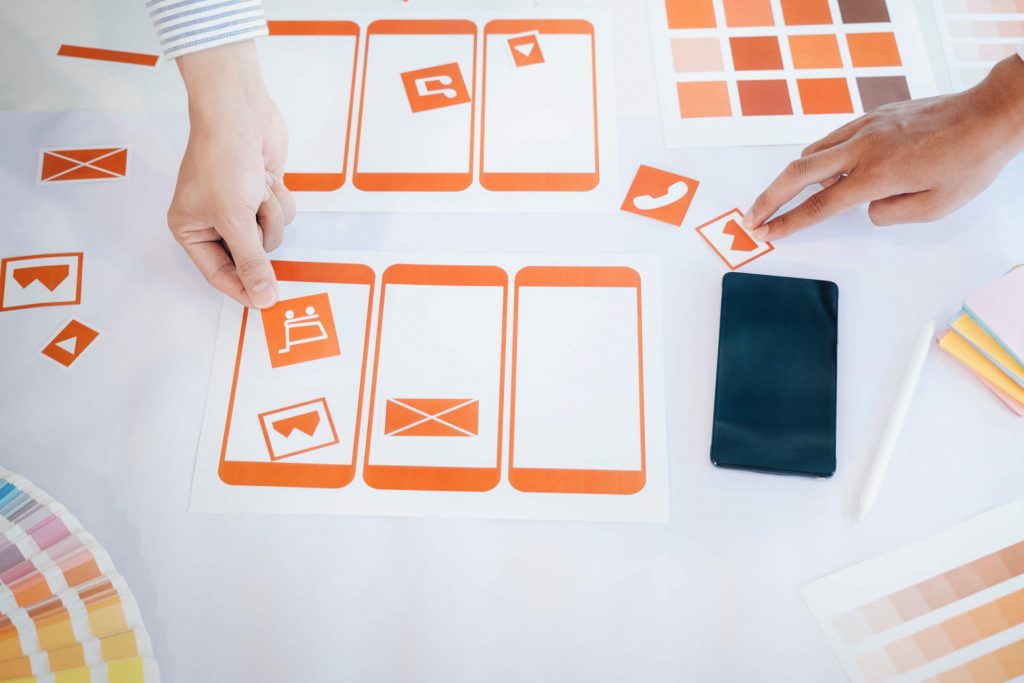Steve Jobs once said, “Design is not about how something looks. Design is supposed to work on us.” Apple’s creator left a huge legacy of innovative design ideas, and the brand’s success is a testament to his ability to penetrate the human mind. But what does Steve Jobs have to do with UX? And what is UX?
We have already written about UX writing here. Today we will bring you even closer to this topic, referring to the example of the IT giant
You are probably wondering what ancient Chinese philosophy could have to do with UX design. Well, Feng Shui translates literally as “wind” and “water” and refers to the spatial placement of objects (e.g. furniture) in relation to the flow of energy (chi). In practice, Feng Shui is all about arranging your surroundings in an optimal, harmonious and human-friendly way – whether it’s in your office, bedroom or an entire building. This applies to everything from furniture layout to materials and colors.
Just as an interior designer might arrange furniture in a way that makes it easier for occupants to move around a room, a UX designer would apply similar principles to the creation of a mobile app. The end goal is the same: to create an intuitive, user-friendly experience. In this regard, it’s fair to say that Feng Shui was one of the earliest nods to UX.
The official definition is: User experience, UX – the entirety of the experience a user has when using a product. Simply put, UX design is about making the user’s experience with a product the best it can be. It aims to draw people to the site they are interested in, and then once they are there, to make their journey from the homepage to purchasing the product as easy and enjoyable as possible.
The UX design aspect focuses on how you can improve the usability, ease of use, and efficiency of a user’s interaction with your product or service. Every time you interact with a product, software or object, you experience it as a user of that product. A UX designer’s job is to be the glue that holds the entire product team together, handing off designs to developers who then implement them.
Equally important in the UX design process is meeting the business goals of the product and aligning the business goals with those of the user. The UX design process can be broken down into three key phases: research, design, and testing.

Research is an integral part of the UX design process. It is the starting point of every UX designer. Research teaches us about users, their behaviors, goals, motivations and needs. It also shows how they currently navigate our system, where they encounter problems, and most importantly, how they feel when interacting with our product.
Often what you think is intuitive may not be so for others, which is why conducting research with real users is so important to the success of a project. Empathy is key. Your job is to try to understand why users behave the way they do, not to try to change or influence that behavior.
The next step in the UX process is to create mockups and prototypes. This gives you something tangible to test on real and potential users, which is key to making sure your designs are usable. Now let’s consider in more detail what usability means.
Again, it’s worth referring to Apple. Everyone recognizes their products because of their elegant and unique design. The designs of iPhones and Macs are so successful that they have been copied by technology companies around the world.
But it is not the aesthetics of Apple products that have brought them international recognition. While Apple’s product designs are recognizable, it was the user experience and usability of their products that set them apart from the competition, refining Apple as the iconic brand it still is. It’s worth remembering that a product’s aesthetics have a huge impact on its appeal, but if it doesn’t work well, its appearance doesn’t matter much.

Designing a satisfying user experience includes meticulously planning the customer journey, helping them find what they’re looking for through an intuitive process. Customers will perform actions based on their previous experiences with other products anyway. The UX designer’s job is to think about how the product/service can adapt to how the customer behaves.
Your product design revolves around functionality and usability, not colors or images (these are determined later by the visual designer). It’s important to determine during your research what users expect from your product or site, what their goals are, and how they like to operate the system. Functionality and usability are always paramount.
Don’t forget: useful, usable, delightful. If you don’t solve the user’s problem, they won’t be interested in your colors or images.
Like research, testing is a fundamental part of a UX designer’s job and a fundamental part of the entire UX design process. Designers test because it allows them to improve the original design of a product or site and see if the changes they made during the design phase will work. It’s a great way to eliminate problems or user difficulties that were unforeseen in the design phase before the implementation phase began, and it can also be done after the product is launched as part of a UX audit. Make sure you test with real users who are not friends or family!
Testing is a misunderstood art, and start-ups and entrepreneurs are often daunted by it due to cost and time concerns. Some are simply afraid to talk to real users. However, testing is not something you can afford to bypass, as even a simple round of testing can ruin a product idea. The time and money a company spends on testing at this stage will save both of these resources later. Contrary to what you think, testing doesn’t have to be time-consuming or expensive. What’s more, studies have shown that testing on 5 users reveals 85% of usability issues.
After going through the entire design process, the implementation of the project follows. UX is an extremely interesting and expansive field. One could say interdisciplinary. Psychology and technology intermingle here. The whole entry above is just an outline of what UX is. There are plenty of books and guides on this subject. For starters, we recommend the biography of Steve Jobs, who came up with Apple after a trip to India.
Main article photo: photo by gremlin / E+ / Getty Images